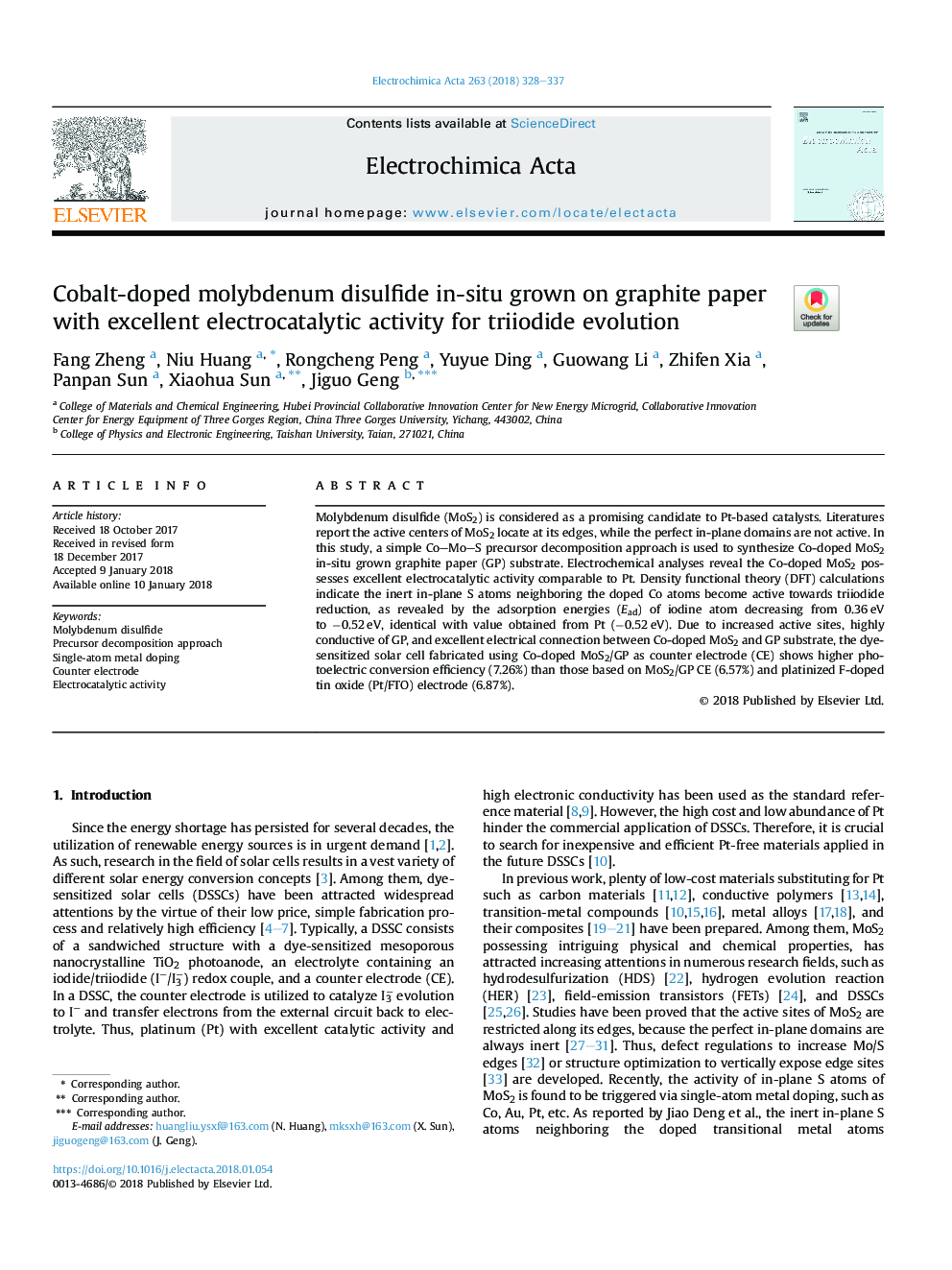| Article ID | Journal | Published Year | Pages | File Type |
|---|---|---|---|---|
| 6604423 | Electrochimica Acta | 2018 | 10 Pages |
Abstract
Molybdenum disulfide (MoS2) is considered as a promising candidate to Pt-based catalysts. Literatures report the active centers of MoS2 locate at its edges, while the perfect in-plane domains are not active. In this study, a simple CoMoS precursor decomposition approach is used to synthesize Co-doped MoS2 in-situ grown graphite paper (GP) substrate. Electrochemical analyses reveal the Co-doped MoS2 possesses excellent electrocatalytic activity comparable to Pt. Density functional theory (DFT) calculations indicate the inert in-plane S atoms neighboring the doped Co atoms become active towards triiodide reduction, as revealed by the adsorption energies (Ead) of iodine atom decreasing from 0.36â¯eV to â0.52â¯eV, identical with value obtained from Pt (â0.52â¯eV). Due to increased active sites, highly conductive of GP, and excellent electrical connection between Co-doped MoS2 and GP substrate, the dye-sensitized solar cell fabricated using Co-doped MoS2/GP as counter electrode (CE) shows higher photoelectric conversion efficiency (7.26%) than those based on MoS2/GP CE (6.57%) and platinized F-doped tin oxide (Pt/FTO) electrode (6.87%).
Related Topics
Physical Sciences and Engineering
Chemical Engineering
Chemical Engineering (General)
Authors
Fang Zheng, Niu Huang, Rongcheng Peng, Yuyue Ding, Guowang Li, Zhifen Xia, Panpan Sun, Xiaohua Sun, Jiguo Geng,
